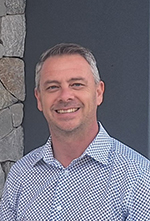
For decades, South Africa’s rubber has been a major material used in both the mining and automotive sectors. Now, with increasing pressure to address energy usage and optimisation, the intervention of Associated Energy Services (AES), a leading operations and maintenance service provider to the steam and boiler sector, could be a game changer.
AES Gauteng regional manager Jordan Smith, and associate director of operations Ray Lund, who work closely with rubber belting and tyre manufacturers in Gauteng and the Eastern Cape, note that there is a strong drive among rubber companies to exchange fossil fuels for renewable energy sources.

Steam for vulcanisation
Steam plays an essential role in vulcanisation, an integral process at the heart of manufacturing of all rubber products − from tyres and conveyor belts carrying raw materials in the mining industry to sealing components such as gaskets, and protective wear such as wetsuits or gum boots. With the application of steam, raw natural or synthetic rubber − which has the consistency of soft bubble gum − is transformed into its final durable, but elastic form.
During tyre manufacture, the green tyre is placed in a mould into which highly pressurised steam is fed. This vulcanises the tyre in the curing machine, where its parts are compressed together, giving the tyre its final shape and durable qualities. Lund notes that tyre manufacturing comes with stringent quality and safety requirements. This means that good control of the steam and heat energy is required when a tyre is being cured.
A press system is used to manufacture rubber belts through the process of steam heating, which provides the pressure and temperature necessary to bond and cure the components. Smith points out that steam provides a consistent source of heat: “If the steam temperature drops and does not heat all sections of the plates equally, the result is a poorly-bonded product which will not deliver the required strength and durability. When there is excess temperature and pressure, the belt produced is too brittle,” he explains.

Steaming towards the future
Although rubber production has changed very little over the years, the sector is now facing many challenges. Ever-increasing cost pressures, coupled with an industry move to greener suppliers, has driven the need for innovation. “Recently, clients have started moving from cyclically heated presses to continuously heated presses, where plates are not cooled and reheated between batches,” Smith explains.
The condensate generated in the manufacturing process can also be recycled, delivering water and useful heat back to the boiler house for re-use. The greatest challenge remains the replacement of carbon-intensive fossil fuels. “With several clients across a range of industries already using biomass, we are in strategic discussions with rubber companies that are considering a move to various forms of renewable energy. This cannot be avoided, and it entails a significant technological shift,” says Lund.
When sustainability is a stretch
Rubber manufacturers with global parent companies are at the forefront of this transformation, which entails striking a balance between the social governance commitments of a multinational and South Africa’s often harsh economic challenges. Change must be carefully managed to ensure long-term sustainability, and should not put businesses at risk.
Lund elaborates: “A fuel switch inevitably necessitates substantial capital investment if clients want to run their plants effectively, efficiently and competitively. A large amount of capex is needed to realise those gains.”
He points out that the technology required to burn biomass efficiently can be more expensive. “Unfortunately, there is a view that, because biomass is waste, it should be inexpensive. Typically, however, we find that locally-owned rubber sector companies are very challenged by the capital investment required and the costs involved. Due to their global ESG commitments, their international counterparts are more inclined to consider workable solutions,” Smith observes.
A phased approach
Smith and Lund both favour a long-term, phased approach, which AES typically recommends to clients in the rubber sector. This begins with the ‘low-hanging fruit’ of quicker gains to be had from optimising the performance of existing plant and processes. This approach ultimately opens up the way for a switch to renewables further down the line.
Taking the phased approach has been successful. AES has a proven track record of delivering substantial improvements in energy optimisation. The company has assisted a rubber sector client to reduce its CO2 emissions and coal consumption by an impressive 11% − with zero capital investment.
Smith attributes this to effectively leveraging economies of scale, cost-effective procurement of the correct quality of coal and spares for maintenance, and individually assessing each client’s site to determine bespoke improvements and savings.
Further to this, well-trained and operationally skilled staff on-site 24/7, are key in successfully driving improvements in energy utilisation. “We have the expertise to ensure the best setup and operation of the steam reticulation and energy plants on our clients’ sites. Many businesses are looking for that extra percentage gain in efficiency, and partnering with AES is an effective way of unlocking that improvement,” he says.
Lund says that with input cost and energy efficiencies − and even carbon emission tax savings − the rubber sector can make the much-needed transition from dependence on fossil fuels. “We would like to encourage rubber sector companies to optimise their energy usage through a strategic partnership with AES. We can get them ‘bouncing back’ and on the road to energy optimisation and sustainability,” he concludes.

© Technews Publishing (Pty) Ltd | All Rights Reserved